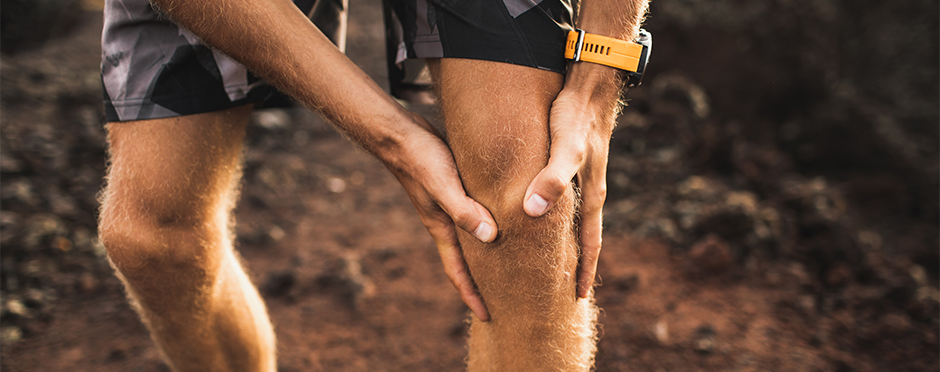
Why Does My Leg Hurt?
Leave a CommentA pain in the leg can be a real problem, especially for endurance athletes looking to train for their next race. Identifying the cause of the pain is a good first step in learning how to heal the injury and prevent it from recurring. Read below to learn about three common leg injuries, including symptoms, causes and treatment options:
Iliotibial Band Tendinopathy
The iliotibial band (ITB) is a wide thick tendon that extends on the outside of the leg from the hip to the knee. ITB tendinopathy (also called ITB syndrome) can occur anywhere along the length of the tendon, but is most common on the side of the leg at either the outer hip or insertion below the knee. The ITB originates from one of the hip muscles, which function to support the pelvis in neutral. Based on its location, the ITB provides primary stability to the hip and knee.
- Symptoms:
- Hip pain can result from tension in the proximal muscle(s) comprising the tendon
- Pain just above the knee due to irritation and tension in the tendon pulling on the attachment site when the knee is bent with movement
- Knee pain with repetitive bending and straightening of the knee
- Causes:
- Decreased flexibility
- Imbalances in muscles of the back, pelvis, hip and knee
- Training errors (running on banked roads, repetitive hill running, incorrect bike pedal position resulting in in toeing when biking)
- Poor gait/running mechanics
- Repeated knee motion with activities like running or cycling, which further exacerbate and inflame the tendon
- Anatomical factors (uneven leg length and abnormal pelvic tilt or knee position)
- Treatment:
- Strengthening and stretching of hip, pelvic, knee and spinal muscles
- Improving flexibility of the ITB tendon with foam rolling or x-friction massage
- Correcting training errors
- Avoiding sitting or sleeping with legs crossed, as well as standing with unequal weight on leg
- Improving pelvic and single limb stability to prevent uneven weight bearing and tension in tendon during running and jumping
- Running and gait training
Patellofemoral Pain Syndrome (PFPS)
Vague anterior (front), retropatellar (behind), or circuferential pain in the kneecap region is commonly called patellofemoral pain syndrome or “runner’s knee.” The condition is common in athletes, yet may also occur in individuals who have recently changed or increased their workout program.
- Symptoms:
- Pain with activities involving contraction or stretching of the quadriceps muscle such as ascending and descending stairs or slopes, squatting, kneeling, running, jumping or cycling
- Pain with prolonged sitting with the knees flexed
- Pain with loaded bent knee positions (squatting)
- Causes:
- Patellofemoral pain is due to an imbalance in the muscles surrounding the knee and alterations in the bony structures composing the joint
- Weakness or inflexibility of the quadriceps, hamstring or hip abductors
- Rapid increase in running mileage or beginning a strengthening program involving excessive squatting, stair climbing or jumping
- Poor foot wear or new shoes
- Genu valgus (knock-knee) position of the knee (pointing inward), especially with squatting or descending stairs
- Poor squatting and jumping form resulting in inward collapse of knees and hips
- Anatomical factors (pronated foot position, inward rotation of knees or hips)
- Treatment:
- Temporarily terminating the offending activity is imperative
- Avoiding repetitive squatting, stair climbing, and jumping
- Strengthening and stretching leg muscles
- Correcting poor squat and jumping form
- Orthotics may be beneficial
Patellar Tendinosis
An overuse injury of the patellar tendon, which connects the kneecap to the shin, is known as patellar tendinosis or “jumper’s knee.” Since the tendon is the continuation of the quadriceps muscle, activities that require excessive quadriceps force such as recurrent kicking, squatting and jumping, may overload the tendon and cause irritation and micro tears, weakening the tendon.
- Symptoms:
- Pain below the kneecap, especially during or after jumping, running or squatting
- Pain with frequent jumping, squatting or cutting (common in athletes who participate in sports such as basketball or volleyball)
- Tendon tenderness and thickening
- Patellar tendinosis, unlike patellofemoral syndrome, is more localized and activity specific
- Causes:
- Weakness in hip muscles that assist with force generation during jumping and squatting
- Poor flexibility in lower leg muscles, especially the hamstring
- Repetitive jumping and squatting, especially at high intensity
- Training on hard surfaces
- Kneecap position or leg length discrepancy
- Treatment:
- Terminating provocative activity
- Ice massage to the tendon may be beneficial in the acute stage
- Chronic tendinosis is best treated with eccentric quadriceps strengthening and correction of the underlying causes
- Strengthening and stretching of the hip and knee muscles
- Squat and jump training
- A patellar tendon strap may be worn during exercise to reduce stress on the tendon,, but should not be used to mask pain
Helping You Get Back to Doing the Things You Love
If you are experiencing any of the symptoms from the conditions listed above, schedule a free assessment to be seen at one of our clinics or virtually through a secure video chat from the comfort of your own home. Our experts will assess your pain or injury and provide recommendations for next steps in your recovery, so you can get back to doing the things you love without pain.
The Athletico blog is an educational resource written by Athletico employees. Athletico bloggers are licensed professionals who abide by the code of ethics outlined by their respective professional associations. The content published in blog posts represents the opinion of the individual author based on their expertise and experience. The content provided in this blog is for informational purposes only, does not constitute medical advice and should not be relied on for making personal health decisions.
